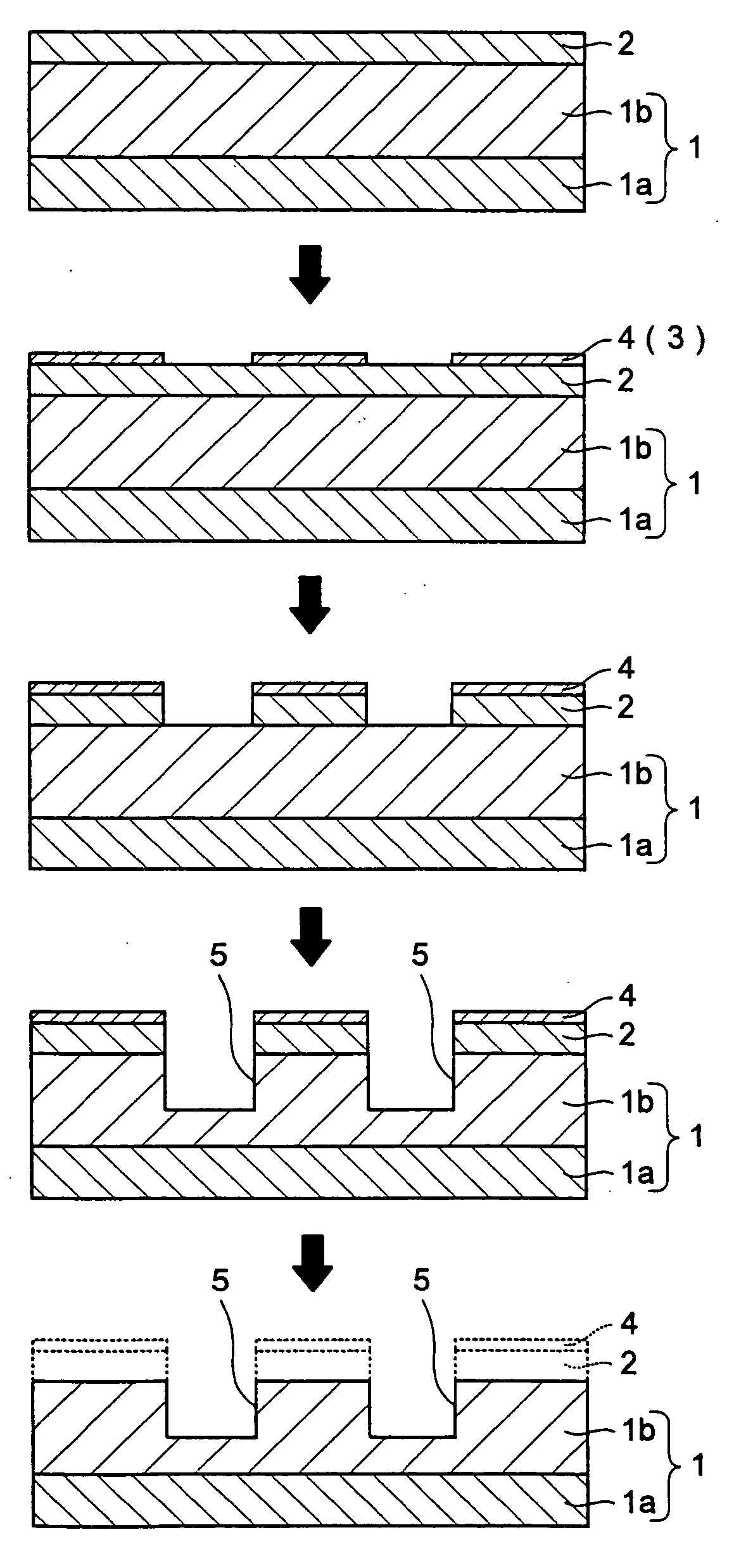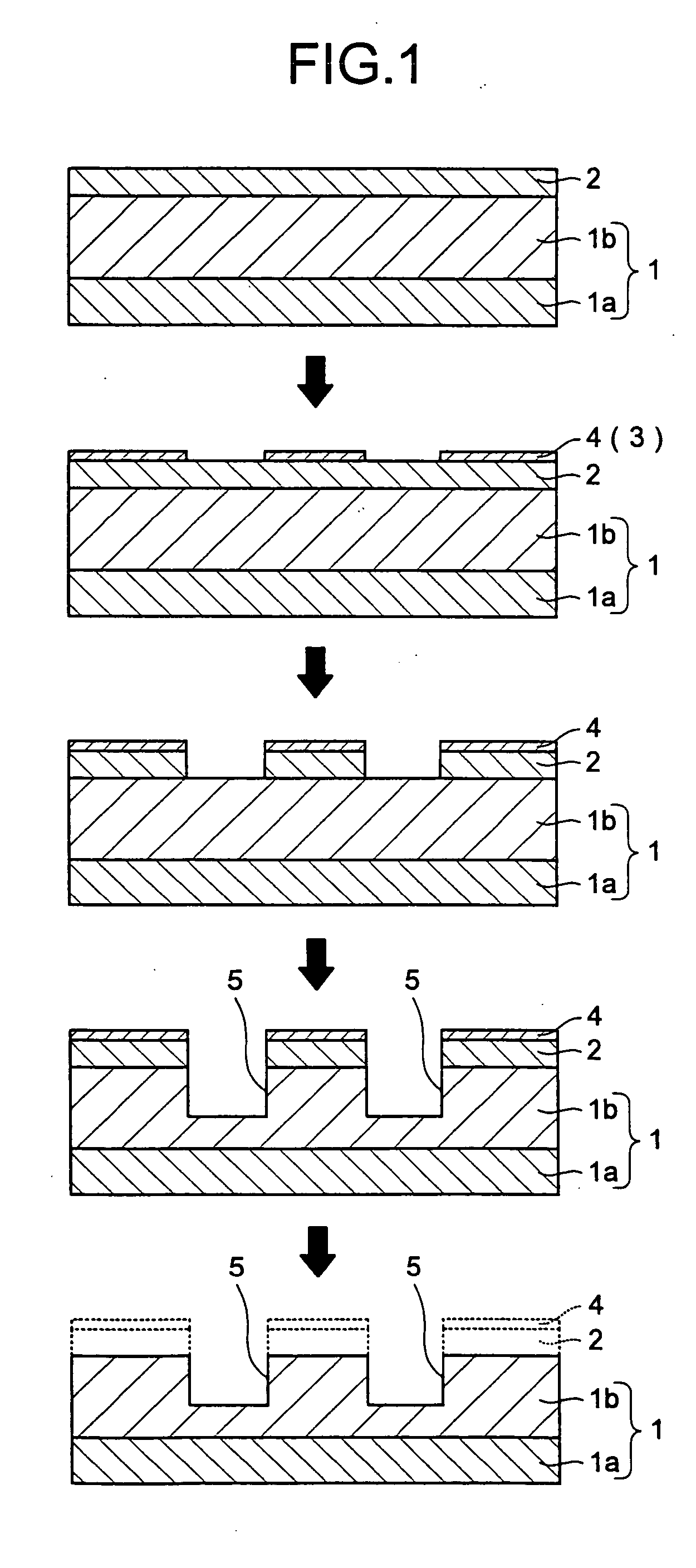Undercoating layer material for lithography and wiring forming method using the same
a technology of undercoating layer and wiring, which is applied in the direction of photosensitive materials for photomechanical equipment, thin material processing, instruments, etc., can solve the problems of reducing the pattern resolution of the photoresist, requiring special equipment, and reducing the bonding or adhesion of the antireflection film to the substrate or resist film, etc., to achieve the effect of effective utilization of materials, less damage, and prolonged time and cumbersome operations
- Summary
- Abstract
- Description
- Claims
- Application Information
AI Technical Summary
Benefits of technology
Problems solved by technology
Method used
Image
Examples
examples
[0074] 24.05 g (0.2 mol) of dimethyidimethoxysilane, 81.75 g (0.6 mol) of methyltrimethoxysilane, 45.68 g (0.3 mol) of tetramethoxysilane, 117.75 g of isopropyl alcohol, 61.27 g of water, and 15.97 μl of an aqueous nitric acid solution (60% aqueous solution) were mixed together, and the resultant solution was stored at room tem perature (20° C.) for 3 hours, and then diluted with 205.56 g of isopropyl alcohol and 161.66 g of acetone to obtain a silane solution. To the silane solution were added 232.26 g of a titanium compound represented by formula (1) above (TC-310, manufactured by Matsumoto Chemical Industry, Co., Ltd.), 1447.07 g of isopropyl alcohol, and 762.67 g of acetone, to prepare an undercoating layer material.
[0075] A substrate having a 100-nm hole pattern (aspect ratio: 5) was then spin-coated with the undercoating layer material obtained in the above, and subjected to stepwise baking at 80° C. for 60 seconds, at 150° C. for 60 seconds, and at 260° C. for 180 seconds. T...
PUM
 Login to View More
Login to View More Abstract
Description
Claims
Application Information
 Login to View More
Login to View More - R&D
- Intellectual Property
- Life Sciences
- Materials
- Tech Scout
- Unparalleled Data Quality
- Higher Quality Content
- 60% Fewer Hallucinations
Browse by: Latest US Patents, China's latest patents, Technical Efficacy Thesaurus, Application Domain, Technology Topic, Popular Technical Reports.
© 2025 PatSnap. All rights reserved.Legal|Privacy policy|Modern Slavery Act Transparency Statement|Sitemap|About US| Contact US: help@patsnap.com



